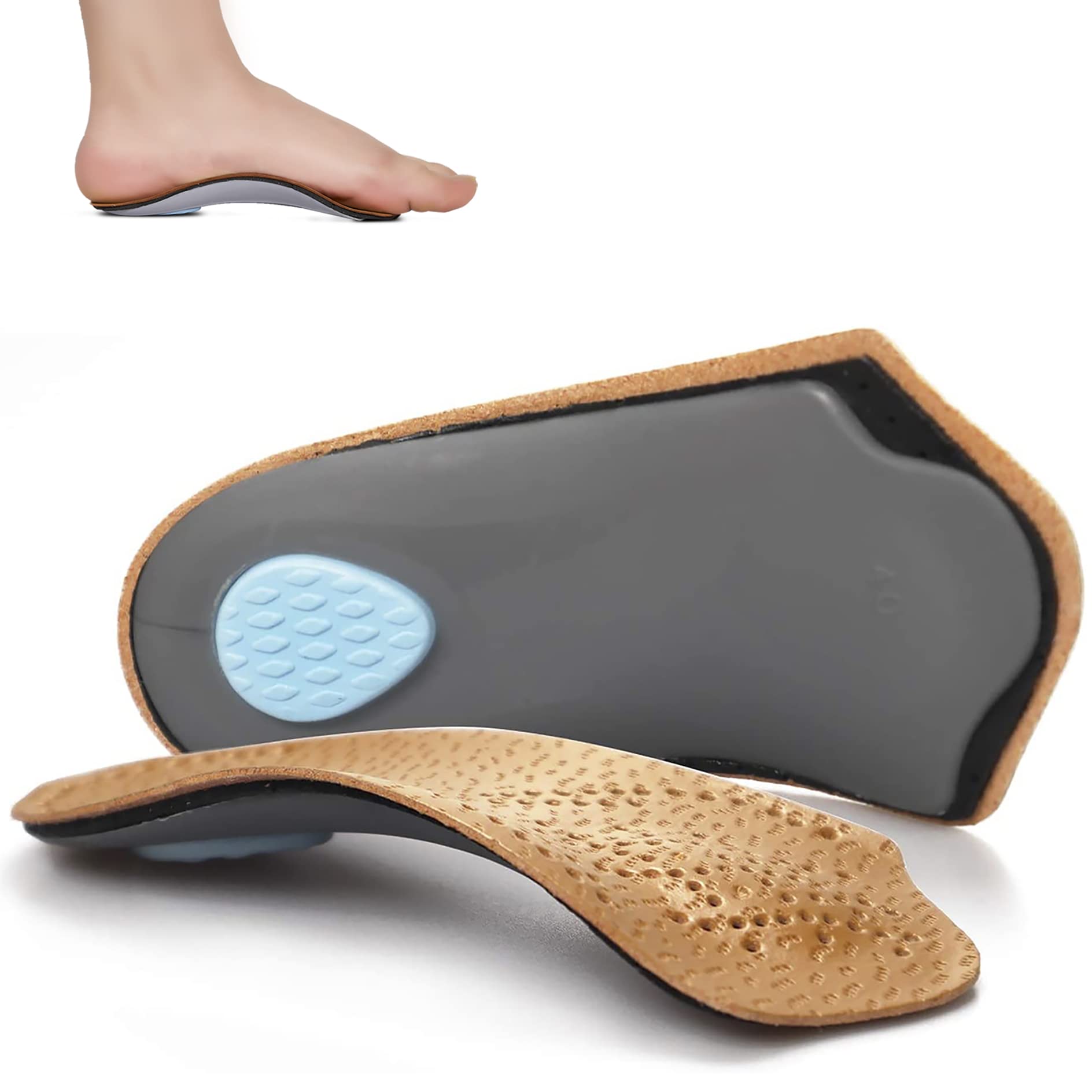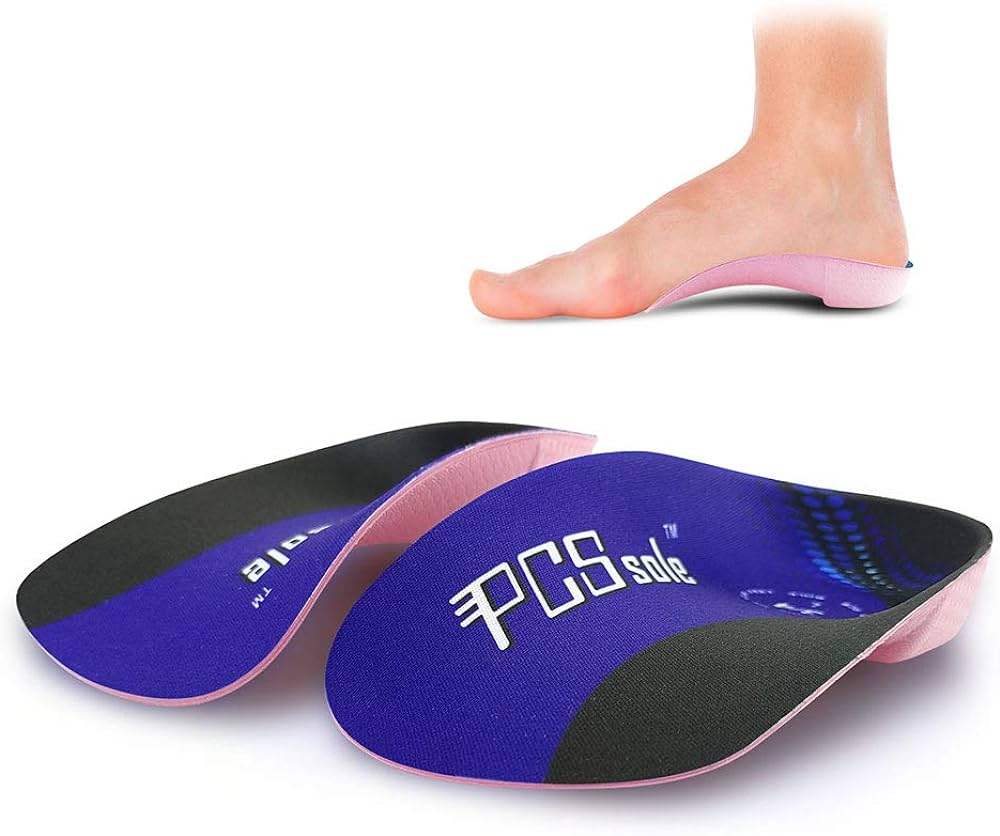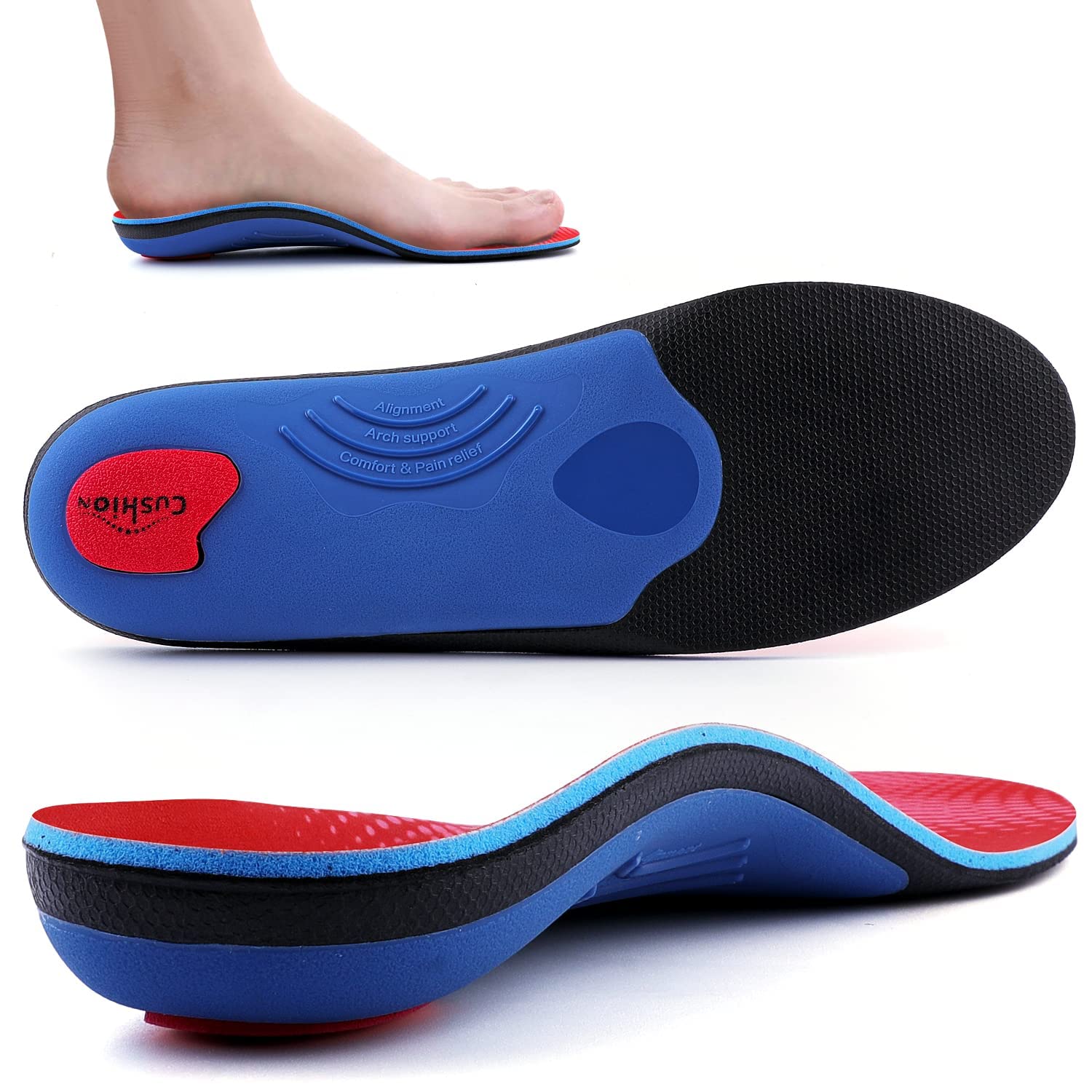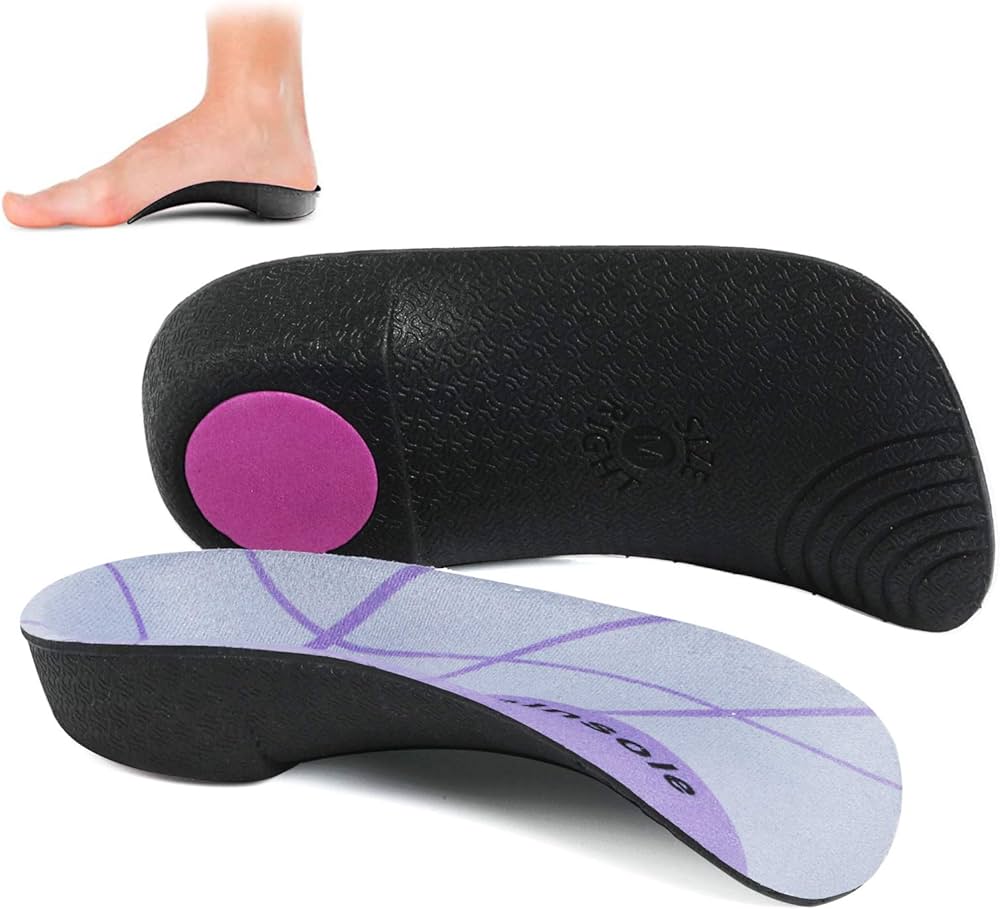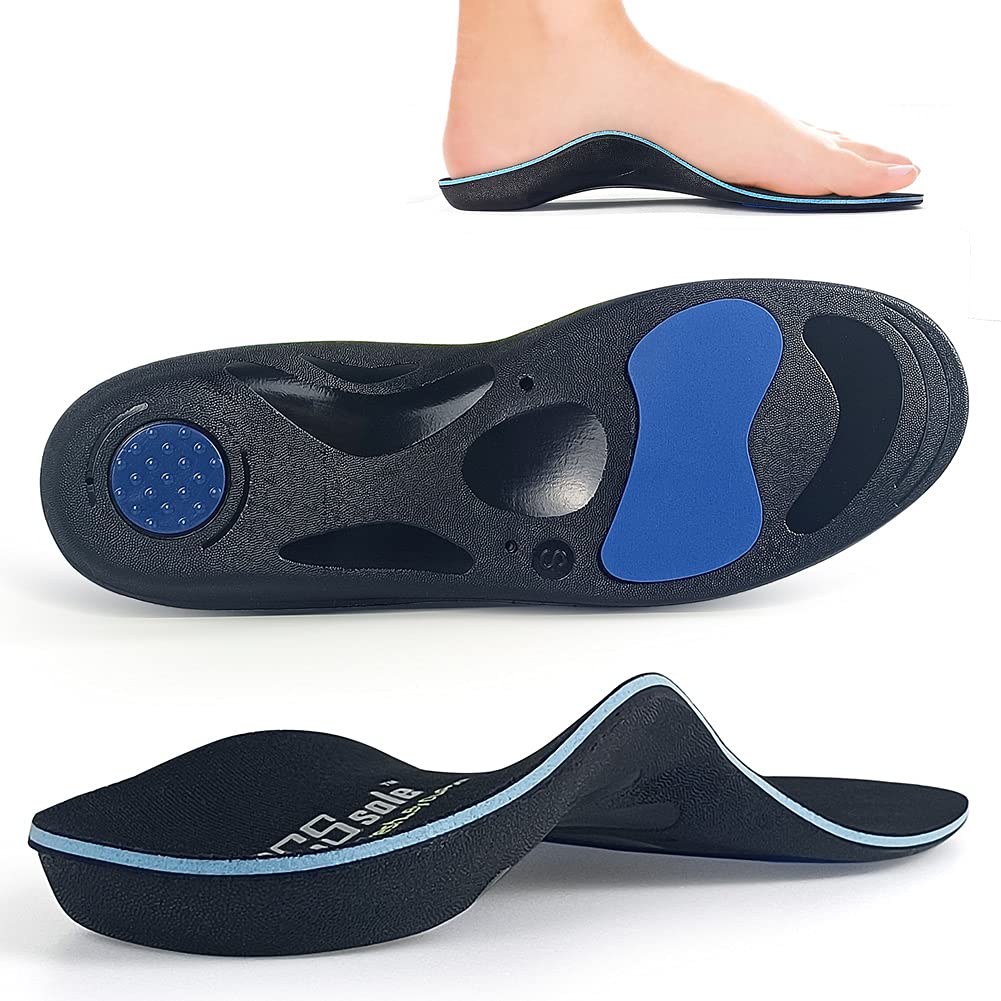I. Introduction to Insoles for High Arches: Supporting Your Feet from Below
Our feet, the marvels of engineering that carry us throughout our lives, rely on a delicate balance between flexibility and support. For those with high arches, this balance can be disrupted, leading to discomfort and potential injuries. Insoles for high arches step in (quite literally) to provide the necessary support and cushioning to alleviate pain and promote healthy foot function.
- A. Understanding High Arches: The Biomechanics of Foot Structure
The arch of the foot is a curved structure running along the bottom, acting like a natural spring. It absorbs shock and distributes weight during walking, running, and other activities. However, in individuals with high arches, this curve is more pronounced than usual. This can cause the feet to roll outward excessively, placing undue stress on certain areas and affecting overall balance.
* **A.1.1: Defining High Arches:** High arches, also known as cavus feet, are a foot type characterized by a higher-than-average arch along the inner side of the foot. This can be a natural variation in foot structure or develop over time due to various factors.
* **A.1.2: Common Causes of High Arches:** Genetics play a significant role in determining foot type, and high arches can be hereditary. Certain activities like ballet or tight calf muscles can also contribute to high arches. Additionally, some medical conditions, such as arthritis or nerve damage, can cause the arches to become higher.
- B. Symptoms and Complications of High Arches: When High Arches Cause Problems
While high arches themselves aren’t necessarily a medical condition, they can sometimes lead to a cascade of problems. The altered biomechanics caused by high arches can put excessive strain on different parts of the foot and lower body.
* **B.1.1: Pain and Discomfort:** The most common symptom of high arches is pain. This pain can manifest in various ways, including pressure points on the balls and heels of the feet, achiness in the arches themselves, and even pain radiating to the ankles, legs, and even lower back.
* **B.1.2: Increased Risk of Injuries:** The altered mechanics of high arches can lead to a higher risk of overuse injuries. Plantar fasciitis, a common inflammation of the tissue connecting the heel to the toes, is a frequent culprit. Other potential injuries include tendonitis, stress fractures, and bunions.
II. The Role of Insoles for High Arches: Providing Support and Relief
Insoles, also known as shoe inserts or orthotics, are inserts placed inside shoes to provide additional support, cushioning, and shock absorption. They come in various materials, designs, and levels of support, and can be a valuable tool for those with high arches.
- A. Understanding Insoles: The Hidden Support System for Your Feet
Think of insoles as the unsung heroes of foot health. Placed discreetly inside your shoes, they work tirelessly to improve comfort and function. There are three main categories of insoles:
* **A.1.1: Over-the-Counter Insoles:** These readily available insoles come in various designs and materials, offering a range of support levels. They are a convenient and affordable option for many people with high arches.
* **A.1.2: Custom-Made Insoles:** These insoles are molded to the individual's feet, providing a precise fit and optimal support for unique foot shapes and arch heights. While more expensive than over-the-counter options, they offer a higher level of customization.
* **A.1.3: Prescription Insoles:** In some cases, a podiatrist (foot doctor) may prescribe specialized insoles for individuals with severe foot problems or complex medical conditions. These insoles are designed to address specific needs and may incorporate additional features like rigid arch support or heel wedges.
- B. Benefits of Insoles for High Arches: Alleviating Pain and Preventing Complications
By providing the necessary support and cushioning, insoles for high arches offer a range of benefits:
* **B.1.1: Arch Support and Pain Relief:** Insoles with built-in arch support help distribute weight more evenly across the foot, reducing pressure on the high arches and alleviating pain and discomfort.
* **B.1.2: Improved Foot Function and Stability:** Insoles can promote proper foot alignment and biomechanics, leading to better stability during walking, running, and other activities. This improved stability can also help prevent injuries.
* **B.1.3: Enhanced Comfort and Shock Absorption:** Cushioned insoles can absorb shock from impact, reducing stress on the feet and joints. This can lead to increased comfort, especially during prolonged standing or activities.
III. Types of Insoles for High Arches: Choosing the Right Support
With a variety of insoles available, choosing the right ones for high arches can feel overwhelming. Here’s a breakdown of the different types to help you find the perfect fit:
- A. Over-the-Counter Insoles: A Readily Available Option
Over-the-counter insoles are the most accessible choice, widely available in drugstores, sporting goods stores, and online retailers. They offer several advantages:
* **A.1.1: Advantages of Over-the-Counter Insoles:** Affordability, convenience, and a wide variety of options to suit different needs and preferences. You'll find insoles with varying arch heights, cushioning levels, and materials to target specific concerns.
* **A.1.2: Limitations of Over-the-Counter Insoles:** Since they are not customized, they may not provide the same level of personalized support as custom-made insoles. Additionally, the quality and effectiveness can vary depending on the brand and price point.
- B. Custom-Made Insoles: Personalized Support for Unique Feet
Custom-made insoles take things a step further by offering a personalized approach to arch support. Here’s what sets them apart:
* **B.1.1: Advantages of Custom-Made Insoles:** A podiatrist will create a mold of your foot, ensuring the insole perfectly matches your unique arch shape and foot biomechanics. This level of customization can significantly improve support, comfort, and function.
* **B.1.2: Disadvantages of Custom-Made Insoles:** The biggest drawbacks are the higher cost compared to over-the-counter options and the potential need for a podiatrist visit to get them molded and fitted.
- C. Prescription Insoles: Specialized Support for Complex Foot Problems
In some cases, a podiatrist may recommend prescription insoles for individuals with severe foot problems or specific medical conditions:
* **C.1.1: Advantages of Prescription Insoles:** These insoles are designed to address complex foot issues and may incorporate features like rigid arch support, heel wedges, or additional cushioning for pressure relief.
* **C.1.2: Disadvantages of Prescription Insoles:** Prescription insoles are typically the most expensive option and require a podiatrist's evaluation and prescription.
IV. Features to Consider When Choosing Insoles for High Arches: Selecting the Perfect Support
Now that you know the different types of insoles, let’s delve into the key features to consider when choosing the right ones for your high arches:
-
A. Arch Support: This is the most crucial factor. Look for insoles with built-in arch support that matches the height and shape of your arches. Options range from moderate arch support for mild high arches to high arch support for more pronounced arches.
-
B. Cushioning and Shock Absorption: Cushioned insoles absorb impact forces during activities, reducing stress on the feet and joints. This is especially important for high-impact activities like running or jumping. Look for insoles with materials like gel, foam, or combinations for optimal comfort.
-
C. Material and Construction: The material of the insole affects its durability, breathability, and odor control. Breathable materials like fabric or mesh are ideal for moisture management, especially for those who sweat a lot or wear closed-toe shoes. Consider your activity level and preferences when choosing the material.
-
D. Shoe Compatibility: Ensure the insoles fit comfortably within your chosen shoes. Some insoles are specifically designed for athletic shoes, dress shoes, or work boots. Additionally, consider the thickness of the insole – overly thick insoles might not fit well in all shoes.
V. Additional Considerations for Insoles for High Arches: Addressing Specific Needs
Beyond the core features, consider these additional factors to find insoles that perfectly match your needs:
-
A. Activity Level: For high-impact activities like running or jumping, prioritize insoles with shock-absorbing materials and good arch support. For low-impact activities or everyday wear, a focus on comfort and breathability might be more important.
-
B. Specific Foot Pain or Conditions: If you experience specific foot pain, like plantar fasciitis or metatarsal pain, look for insoles designed to address those concerns. These insoles may have additional features like heel wedges or targeted cushioning for pressure relief.
-
C. Personal Preferences: Consider your comfort preferences. Some insoles offer a more rigid support, while others prioritize flexibility. Additionally, some insoles have a contoured design for a more anatomical fit. Choose the option that feels most comfortable and supportive for your feet.
By considering these factors, you can narrow down your choices and find the perfect insoles for your high arches.
